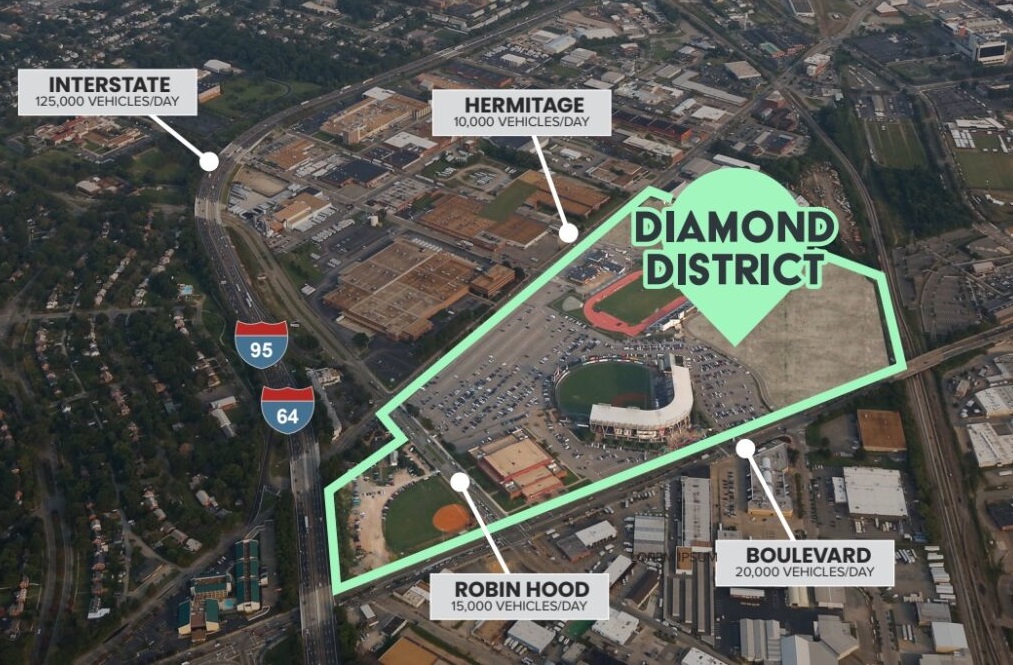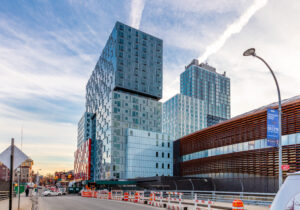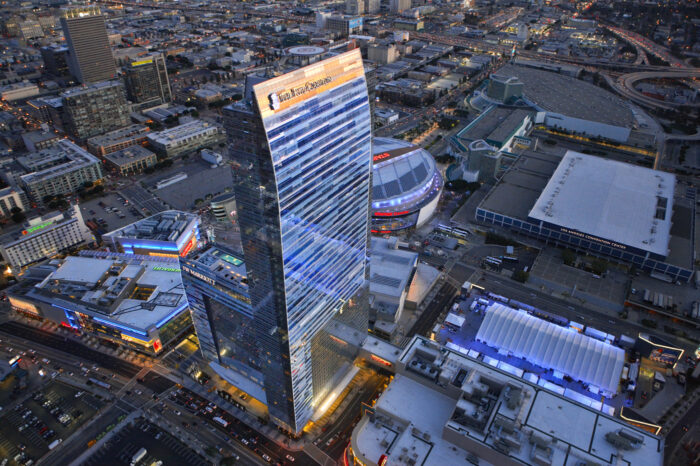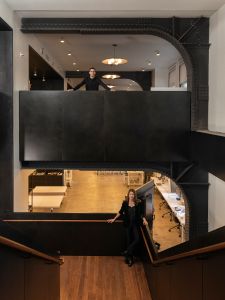
Five Questions With: MaryAnne Gilmartin Founder & CEO, MAG Partners
When Real Estate In-Depth pondered who would be the candidate for the Five Questions feature for Women’s Month, the logical choice was MaryAnne Gilmartin.
Her background in real estate as she tells it almost began by happenstance, but her hard work has led her to found her own New York City-based real estate development firm—MAG Partners—in 2020 that in a short time has built a $1-billion pipeline.
The Fordham University graduate (undergraduate and graduate degree) began her career with the New York City Public Development Agency (the predecessor to the New York City Economic Development Corp.) and since then has held chief executive positions with some of the country’s leading development firms, including Forest City Ratner and Mack-Cali Realty Corp. She has overseen a host of high-profile projects and has been frank about who has guided her and now pays it forward and mentors others in their real estate careers.
Gilmartin, who serves as a special advisor to Fordham Real Estate Institute’s Executive Advisory Council, recently said at a “She Builds” session held at the university’s Lincoln Center campus, “I’ve built my career trying to bump up against what people think of as a developer and identify more with ‘placemaker.’ If I use the word ‘developer,’ I refer to myself as a ‘civic developer’ because what we do is contribute to civic life and with that comes a great responsibility. I’d love the word developer to mean all that I know that it is, which is a person who creates place, changes the skyline and the ground plane in cities, and builds something of lasting quality that impacts the lives of the community in which it exists.”
Gilmartin served as President and CEO of Forest City Ratner Companies, where she oversaw a host of game-changing ground-up developments and managed its multimillion square foot residential, commercial and retail portfolio. She also served as Chair of the Board of Directors and interim Chief Executive Officer of Mack-Cali Realty Corporation.
In her tenure at Forest City Ratner Companies, she spearheaded the development of some of the most high-profile real estate projects in New York City. She led the efforts to build Barclays Center, the state-of-the-art sports and entertainment venue and the centerpiece of the $4.9 billion, 22-acre mixed-use Pacific Park Brooklyn development.
She also oversaw the development of The New York Times Building, designed by world-renowned architect Renzo Piano; New York by Gehry, designed by award-winning architect Frank Gehry; and the Tata Innovation Center at Cornell Tech, a new office building that is a first-of-its-kind space for tech innovation, designed by Weiss/Manfredi on Roosevelt Island. During her tenure at Forest City, the firm also developed Ridge Hill in Yonkers.

Today, MAG Partners is developing a number of distinctive projects, including 281 West 28th Street, a mixed-income residential building designed by COOKFOX that will begin leasing in early 2023. In addition, the company is developing two other residential buildings and a boutique office building in Hudson Square. In partnership with Sagamore Ventures, Goldman Sachs Asset Management and MacFarlane Partners, MAG Partners is leading the development of Baltimore Peninsula, a 235-acre masterplan in Baltimore, MD. In 2023, 1.1 million square feet of office, retail and residential development will open on a prime waterfront location.
Gilmartin is a civic leader in the New York metropolitan area, serving as Chair Emeritus of the Downtown Brooklyn Partnership, a member of the Board of Trustees of The Brooklyn Academy of Music, a member of the New York Public Radio Board of Trustees, and a member of the Executive Committee and Board of Governors of The Real Estate Board of New York. At Columbia University, she is part of the Industry Advisory Board of the MS Real Estate Development Program as well as a member of the real estate advisory board in the Center for AI in Business Analytics & FinTech. In addition to her civic and industry board service, she was appointed a member of the board of directors of the global investment banking firm Jefferies Group LLC in 2014.
Real Estate In-Depth: Your background in real estate is very impressive, rising to president and CEO of Forest City Ratner Companies, serving as chairman and interim CEO of Mack-Cali Realty during a tense shareholder battle and founding your own real estate development company MAG Partners three years ago. Can you tell us what led you into the industry and what have been your keys to success in what has been a male-dominated industry?
Gilmartin: I call myself an accidental developer because this career path relied on serendipity. I had no inkling of what I wanted to be when I grew up, but coming out of university, I landed an Urban Fellow fellowship. I was assigned to New York City’s Public Development Agency, which is now the Economic Development Corporation. My plan was to spend a summer with them, and then go off to law school in September and fight for the rights of juveniles in the justice system.
At the Public Development Agency, I discovered that I had real estate development in my veins. At the time, leadership at PDC would challenge the team by saying, “Let’s look at the West Side, what should we do with it?” It was an incredible place to start a career and my path to meeting Bruce Ratner with whom I would work for the next 25 years.
My career grew in a meritocracy. Bruce always chose the best man or the best woman for the job. So, I always made sure to know the most, be the most prepared and worked the hardest. I never had my eye on the corner office, but it turns out, in a meritocracy, if you prove yourself, you can get the top job.
After serving as CEO at Forest City Ratner, I set out to build a company that looks a little more like the community for which we build, MAG Partners. This of course is a very simple statement, but I clearly have been a little bit of an anomaly in the business in a way that I wish I wasn’t.
Real Estate In-Depth: Were there people who were your mentors and/or helped you along the way in your career. If so, please explain?

Gilmartin: Mentoring has played an outsized role in my professional evolution. The role of mentor or mentee is critical to the career development of the women in our field, and I take my own responsibility seriously when I meet young women who want to get into the industry. My two most influential mentors have been Bruce Ratner and Mary Ann Tighe (CBRE). With both in my corner, I hit the career lottery. Because of the profound impact mentoring has had on my career, I have vowed to always be a mentor to others in order to pay it forward.
Real Estate In-Depth: What would you say were the obstacles you faced and women still must overcome in the commercial development arena and what advice do you have for women in commercial real estate?
Gilmartin: While I have said many times before that I never got that email that said, “you’re a woman so you should feel really intimidated” in this industry. But again, that is because I was part of a meritocracy and it was always the best man or woman for the job with Bruce Ratner. My advice is to be the most prepared and to not be afraid to show off your stuff.
Real Estate In-Depth: You recently began leasing MAG Partners’ first project—Ruby—a 480-unit residential project at 243 West 28th St. in Chelsea. In a short time, MAG Partners has built an impressive pipeline with projects planned at 335 Eighth Avenue, 300 East 50th St.; 122 Varick St. in the Hudson Square District; 44-02 Vernon Blvd. in Long Island City, as well as MAG Partners’ participation in the 1.1-million-square-foot Baltimore Peninsula Project. From what I understand, all of your New York City projects qualified for the now expired 421a tax incentive. Will the lack of 421a inhibit development in New York City in years to come if not reinstated in some form?
Gilmartin: Absolutely. But in the more near term, we are extremely focused on an extension to the deadline to complete these projects, something Governor Hochul put forward in her budget. This deadline is not just important to my company and the projects we have moving—the danger of missing the 2026 deadline is putting 33,000+ units in jeopardy of not moving forward. With the current challenges in the markets, it is critical that the legislature extend the deadline for vested projects.
Real Estate In-Depth: Does MAG Partners have any plans to enter other markets in the New York City metro area, specifically the lower Hudson Valley?
Gilmartin: The great thing about being a private company is that we can be opportunistic. We want to be rational and strategic, and we are not confined to New York City.
View Source













